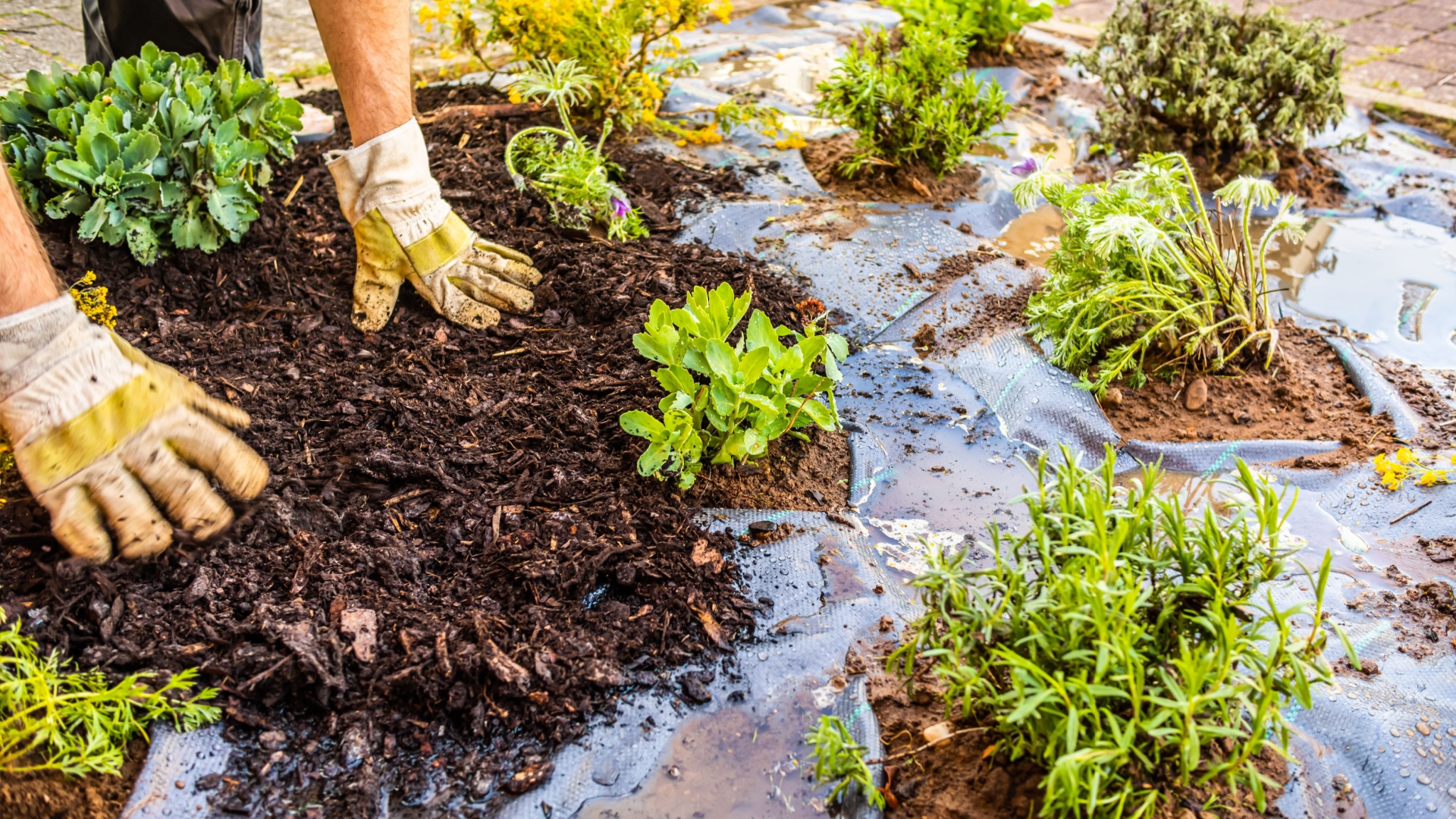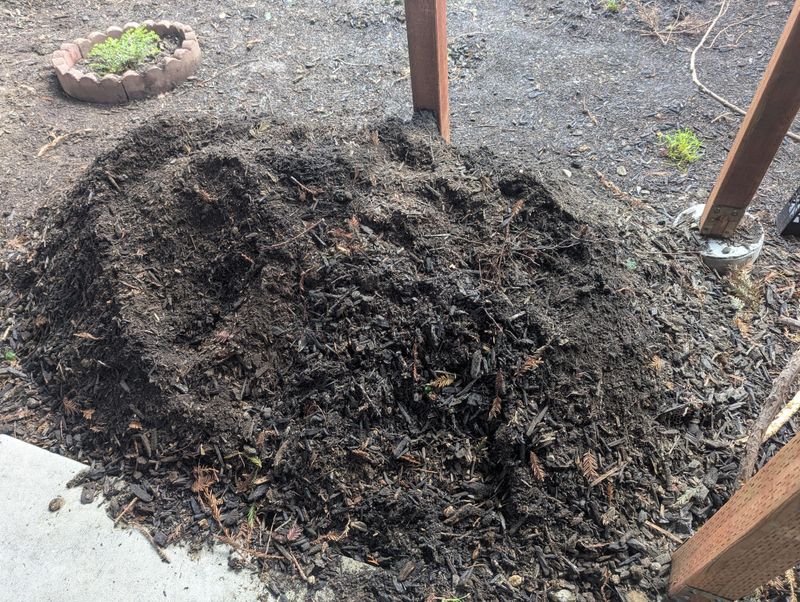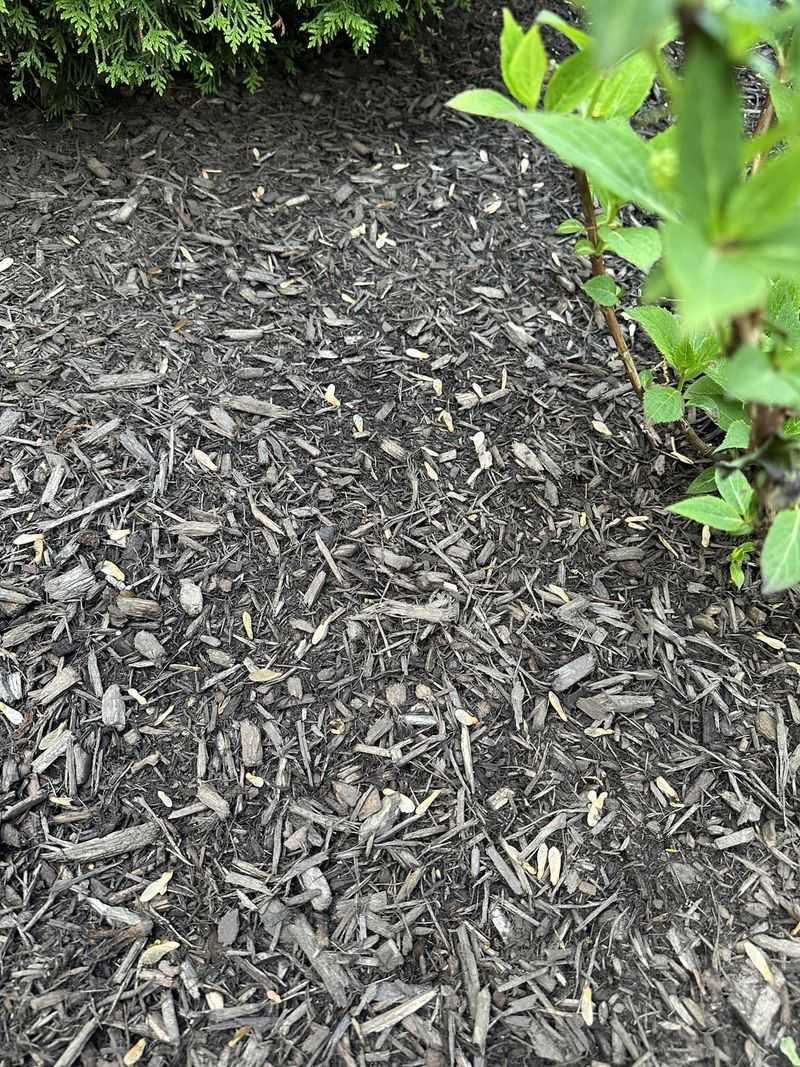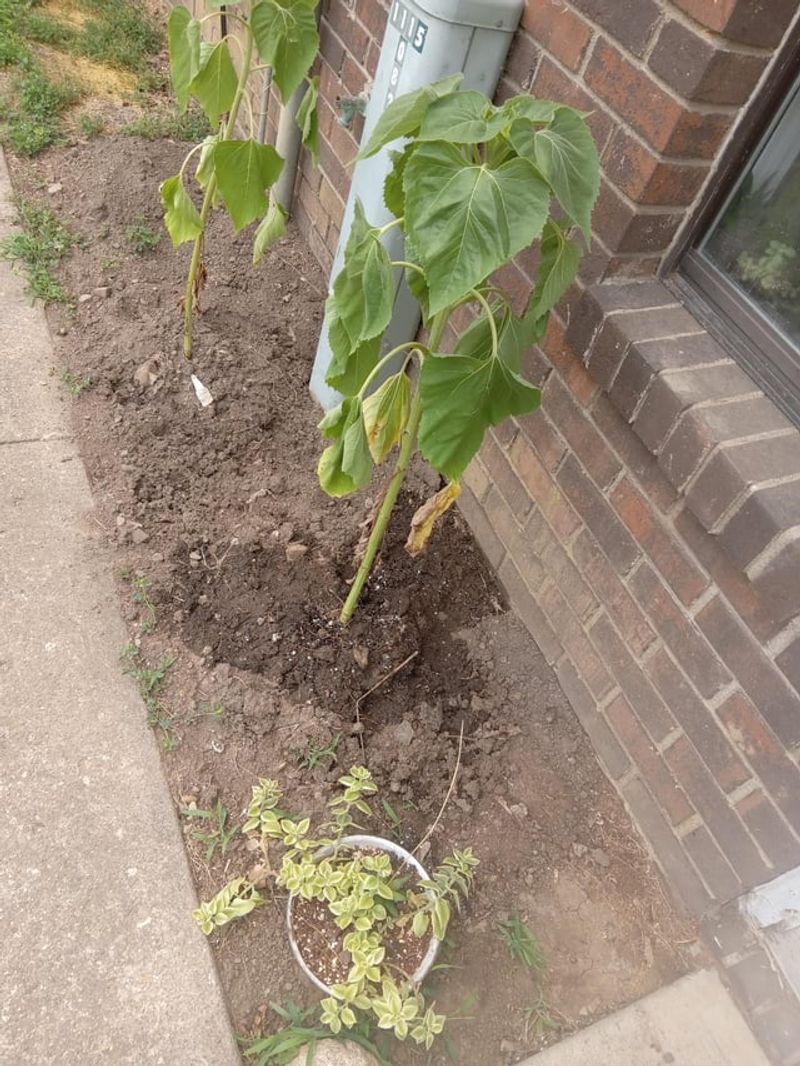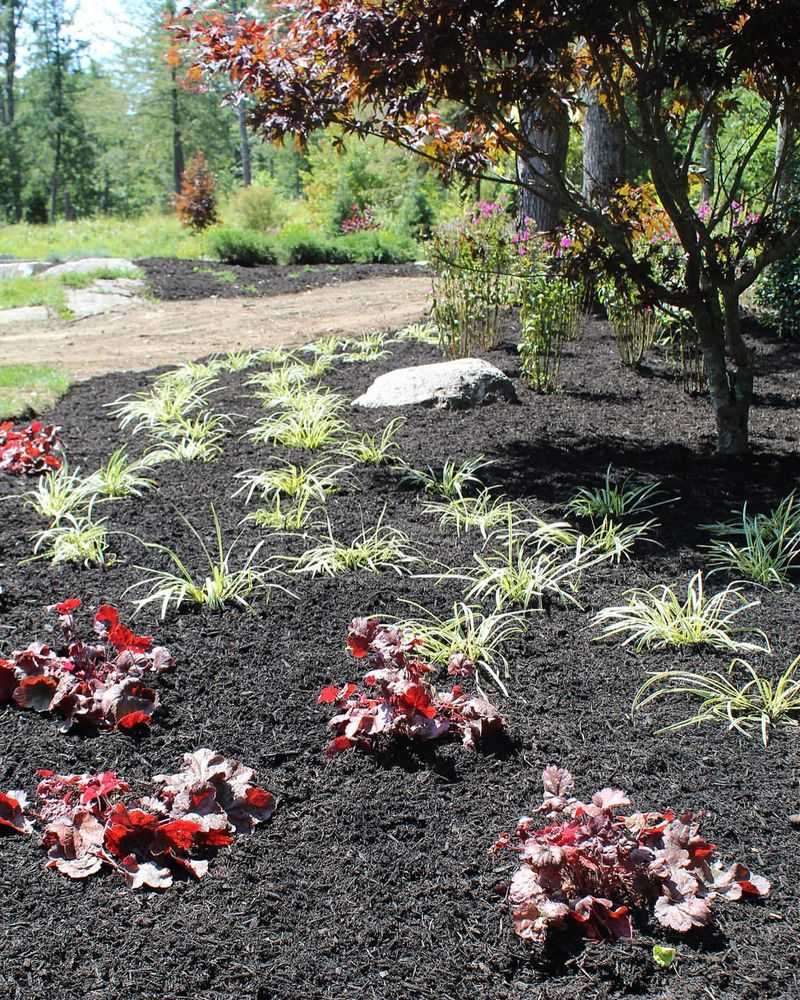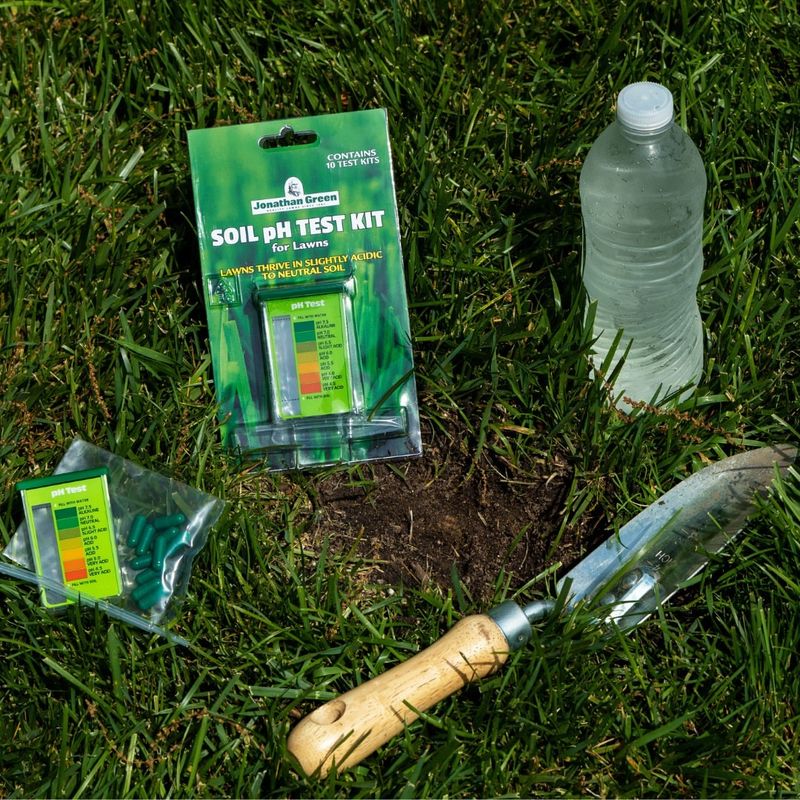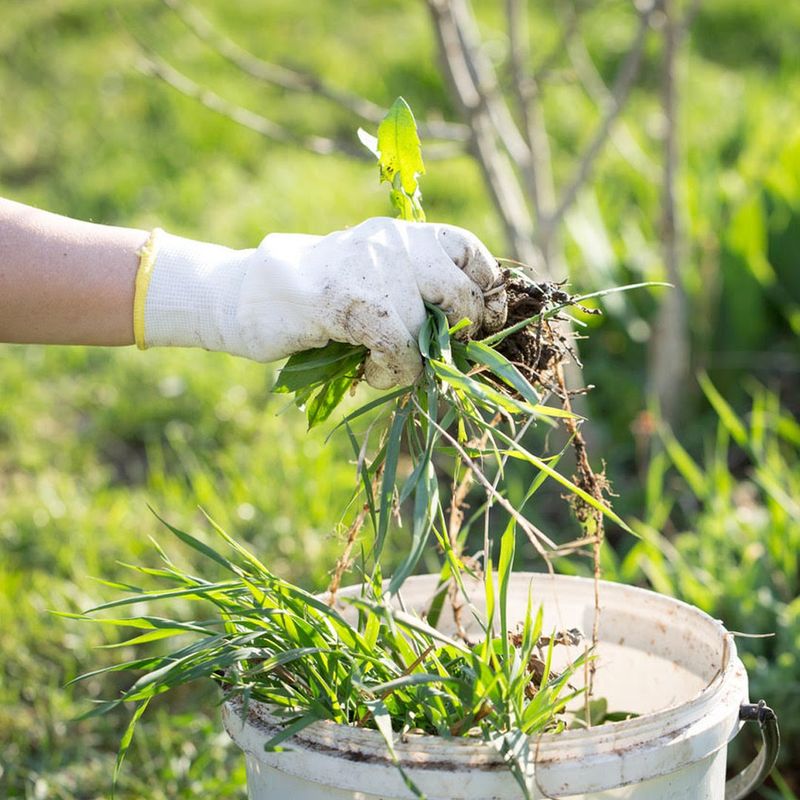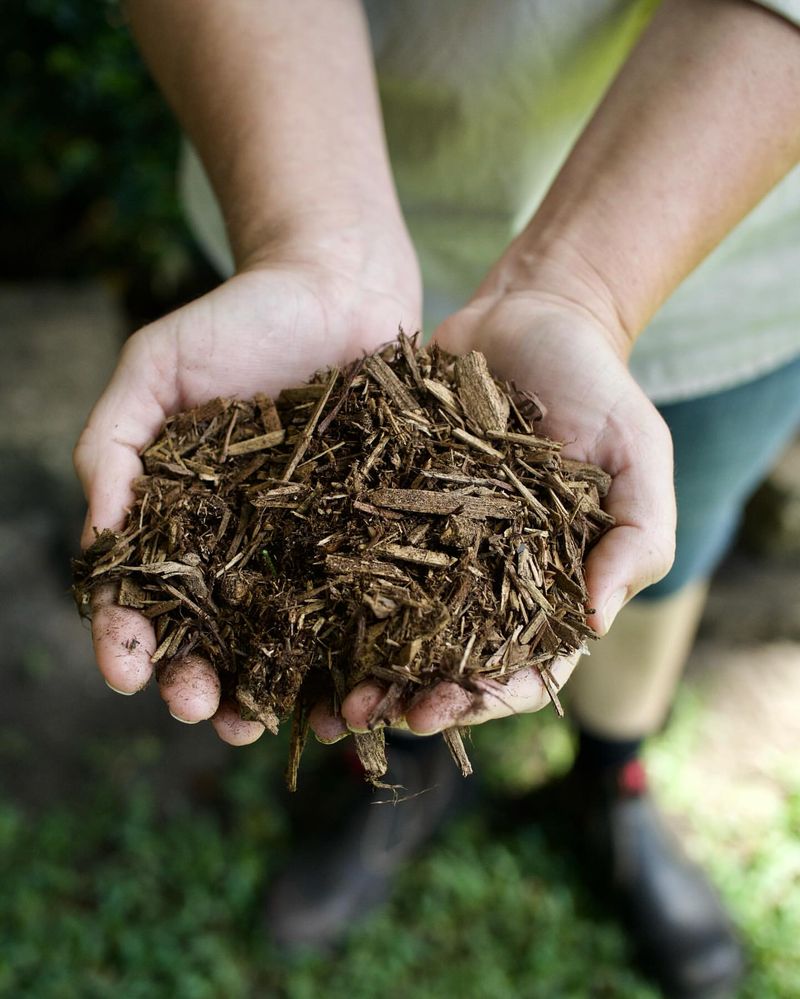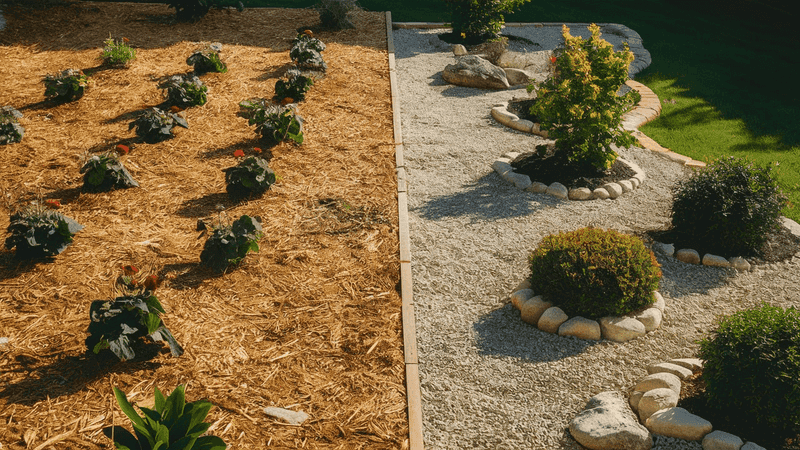Mulch should make your West Virginia yard healthier—not harder to manage. But a few common habits can turn mulch from helpful to harmful fast. Piling it too high, placing it too close to your plants, or using the wrong kind altogether can suffocate roots, invite pests, and waste your time.
If your mulch isn’t working like it should, this might be the reason why.
1. Piling Mulch Against Tree Trunks
Creating ‘mulch volcanoes’ around trees invites trouble faster than summer storms roll through the Alleghenies. When mulch touches tree bark, it traps moisture and creates the perfect home for fungi and pests.
Trees actually need their root flares exposed to breathe properly. Keep mulch at least 3-6 inches away from trunks, forming a donut shape rather than a volcano. Your trees will thank you with stronger growth and fewer disease problems.
2. Forgetting To Remove Old Mulch
Many West Virginia gardeners simply pile new mulch on top of old, creating thick, impenetrable layers that suffocate soil. Matted old mulch prevents water and nutrients from reaching plant roots, especially in our clay-heavy mountain soils.
Before adding fresh mulch each spring, rake and fluff the existing layer. Remove any compacted or moldy sections. Your soil needs to breathe just like you enjoy fresh mountain air after a long winter indoors.
3. Using Dyed Mulch Near Edibles
Those bright red and black mulches might look striking against West Virginia’s green landscape, but they don’t belong near your tomatoes or peppers. Colored mulches often contain chemical dyes and sometimes recycled wood treated with harmful preservatives.
For vegetable gardens and herb beds, stick with natural, undyed options like pine straw or plain hardwood mulch. Your homegrown produce will be safer, and you’ll avoid introducing unnecessary chemicals into our precious mountain soil.
4. Mulching When Soil Is Bone Dry
Rushing to mulch during our occasional summer dry spells might seem helpful, but it’s actually counterproductive. Applying mulch to parched soil just locks in the dryness, preventing even heavy mountain rain from reaching the roots.
Always water thoroughly before mulching. Give the soil a good, deep soak – aim for at least an inch of water. Then apply your mulch layer while the ground is still damp, creating ideal conditions for plants to thrive through our hot Appalachian summers.
5. Spreading Mulch Too Thin
Skimping on mulch depth won’t give you the weed control or moisture retention benefits you need for West Virginia’s unpredictable weather patterns. A too-thin layer lets sunlight reach weed seeds and allows moisture to evaporate quickly during our hot summers.
For most landscape beds, aim for 2-3 inches of mulch depth. This sweet spot provides adequate weed suppression and moisture retention without suffocating plants. Measure with your fingers – mulch should reach your first knuckle when pressed into the soil.
6. Ignoring Your Soil’s pH Needs
West Virginia soils vary widely, from the acidic mountain forest floors to the more alkaline areas in limestone regions. Using the wrong mulch can push your soil pH in the wrong direction.
Pine needle mulch increases acidity – great for azaleas and blueberries but problematic for vegetables. Hardwood mulches gradually raise pH levels as they decompose. Test your soil first, then choose mulch that complements your plants’ needs rather than fighting against our unique mountain soil conditions.
7. Mulching Too Early In Spring
Eager gardeners across the Mountain State often rush to mulch at the first hint of spring sunshine. This common mistake can keep soil temperatures too cool, delaying plant growth when our growing season is already shorter than in southern states.
Wait until soil has properly warmed – usually mid to late May in most parts of West Virginia. Early mulching also gives overwintering pests a cozy hiding spot. Patience rewards you with stronger plants that catch up quickly once warm weather truly arrives.
8. Using Fresh Wood Chips On Vegetable Gardens
Fresh wood chips might seem like an economical mulch choice after storm cleanup, but they can harm your vegetable garden. Fresh wood materials pull nitrogen from the soil as they decompose, stealing nutrients from your precious tomatoes and peppers.
For vegetable gardens in our mountain state, choose well-aged compost, leaf mold, or straw instead. Save those fresh wood chips for pathways or around established trees. Let them age for at least a year before using them near hungry vegetable plants.
9. Letting Weeds Grow Before Mulching
Mountain state gardeners sometimes try to save time by mulching over existing weeds. Unfortunately, many of our tough Appalachian weeds – like dandelions and chickweed – simply push right through the mulch layer and continue growing.
Always start with weed-free soil. Pull weeds completely, including roots, before laying down landscape fabric or newspaper as an additional barrier. Then apply your mulch. This extra step saves countless hours of future weeding in our fertile mountain soil.
10. Applying Mulch During Rainy Periods
West Virginia’s spring and summer thunderstorms can turn freshly applied mulch into a floating mess. When heavy rains hit our mountain slopes, newly spread mulch often washes away before it can settle, wasting your time and money.
Check the weather forecast before mulching. Aim for a dry spell of at least 2-3 days to allow mulch to settle properly. If you’re on a hillside property, common in our mountainous state, consider installing edging to help keep mulch in place during our frequent downpours.
11. Overlooking Native Mulch Options
Many West Virginians import expensive mulch while overlooking perfect natural options right in their backyards. Our abundant oak and maple leaves, pine needles, and even grass clippings make excellent, free mulch materials.
Shred fall leaves with your mower and store them for spring mulching. Pine needles from our abundant evergreens work wonderfully for acid-loving plants. Using local materials not only saves money but also mimics the natural forest floor of our beautiful Appalachian ecosystem.
12. Forgetting To Mulch High-Wind Areas
West Virginia’s mountain ridges and valleys create unique wind patterns that can blow away lightweight mulches. Many gardeners get frustrated when their carefully applied mulch ends up scattered across the yard after our strong spring winds.
In exposed locations, choose heavier mulch materials like hardwood chips rather than lightweight pine straw. Water new mulch thoroughly to help it settle. For especially windy spots, consider placing a few decorative rocks on top of your mulch layer to anchor it until it settles.
13. Using Mulch As A Sole Soil Amendment
Relying on mulch alone to improve West Virginia’s clay-heavy or rocky mountain soils is a common mistake. While mulch does eventually break down into organic matter, it works primarily as a protective layer rather than a soil improver.
For truly healthy garden soil, incorporate compost and other amendments directly into the soil before mulching. The mulch then serves as the protective topcoat that prevents erosion during our heavy rains. This two-step approach builds the rich, fertile soil that helps plants thrive in our varied climate.

